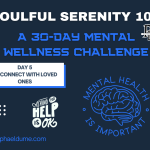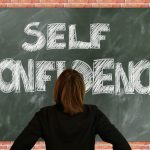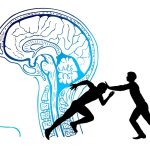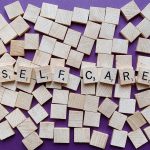
Mindfulness is a practice that has gained immense popularity in recent years, and for good reason. It offers a wide range of physical, mental, and emotional benefits, making it a valuable tool for improving overall well-being. While mindfulness can be cultivated through formal meditation sessions, it’s equally important to integrate it into your daily life.
In this article, we’ll explore practical mindfulness exercises that you can easily incorporate into your daily routine to experience its transformative effects.
Understanding Mindfulness
Before diving into the exercises, let’s briefly clarify what mindfulness is and why it’s worth incorporating into your life. Mindfulness is the practice of being fully present and aware of the present moment without judgment. It involves paying attention to your thoughts, feelings, sensations, and surroundings with an open and accepting attitude.
Mindfulness has been extensively studied, and research suggests that it can lead to numerous benefits, including:
- Stress Reduction: Mindfulness can help reduce stress by promoting relaxation and enabling you to respond to challenging situations with greater composure.
- Improved Emotional Regulation: It can enhance your ability to manage your emotions, preventing impulsive reactions and promoting emotional balance.
- Increased Focus and Concentration: Mindfulness exercises train your attention, enhancing your ability to concentrate and be more productive.
- Enhanced Self-Awareness: By observing your thoughts and emotions, you gain a deeper understanding of yourself and your thought patterns.
- Better Relationships: Mindfulness can improve your relationships by promoting empathy, active listening, and better communication.
- Physical Health Benefits: It can have positive effects on physical health, such as lowering blood pressure, improving sleep quality, and boosting the immune system.
Now that we understand the potential benefits of mindfulness, let’s explore some practical exercises you can incorporate into your daily life to cultivate this valuable skill.
1. Mindful Breathing
One of the simplest and most effective mindfulness exercises is mindful breathing. It can be practiced anywhere, at any time, and it’s an excellent way to anchor yourself in the present moment. Here’s how to do it:
- Find a quiet place where you can sit or stand comfortably.
- Close your eyes, if you’re comfortable doing so, and take a few deep breaths to center yourself.
- Pay attention to your breath as you inhale and exhale. Notice the sensation of the breath entering and leaving your body.
- You may find it helpful to place your hand on your abdomen to feel the rise and fall with each breath.
- If your mind begins to wander (which is entirely normal), gently bring your focus back to your breath without judgment.
- Continue this practice for a few minutes or longer if you have the time.
Mindful breathing can be a powerful tool for managing stress and anxiety, as it helps you stay grounded and calm in challenging situations.
2. Mindful Walking
Walking is an activity we do every day, but we often do it mindlessly, lost in thought or distracted by our smartphones. Mindful walking is a simple yet transformative practice that allows you to turn a routine activity into a mindfulness exercise:
- Find a quiet place to walk, preferably in nature, but any environment will do.
- Begin walking at a slow to moderate pace.
- Pay attention to the sensation of each step. Notice the way your feet lift off the ground, move through the air, and make contact with the earth.
- Feel the subtle movements and balance adjustments in your body as you walk.
- Observe your surroundings—the colors, shapes, and textures of the objects around you.
- If your mind starts to wander, gently redirect your focus to the physical sensations of walking and your environment.
- You can synchronize your breath with your steps, taking a deep breath in with each step forward and exhaling as your foot makes contact with the ground.
Mindful walking can be an excellent way to de-stress, clear your mind, and connect with the world around you.
3. Mindful Eating
Eating is another everyday activity that often goes unnoticed as we rush through meals or eat while distracted. Mindful eating is a practice that encourages you to savor your food and fully appreciate the sensory experience of eating. Here’s how to practice mindful eating:
- Choose a meal or snack to eat mindfully. It could be breakfast, lunch, dinner, or even a piece of fruit.
- Sit down at a table, free from distractions like the TV or smartphone.
- Take a moment to look at your food. Notice its colors, shapes, and textures.
- Before taking your first bite, take a few deep breaths to center yourself.
- As you eat, pay close attention to the flavors, textures, and sensations in your mouth. Chew slowly and savor each bite.
- Be mindful of the act of swallowing and the feeling of nourishment as the food enters your body.
- If your mind starts to wander or you catch yourself rushing, gently bring your focus back to the food.
- Eating mindfully not only enhances your appreciation of food but can also lead to healthier eating habits and improved digestion.
4. Body Scan Meditation
The body scan meditation is a powerful mindfulness exercise that helps you develop greater awareness of physical sensations throughout your body. It can be especially helpful for relaxing and releasing tension. Here’s how to do it:
- Find a quiet and comfortable place to lie down or sit.
- Close your eyes and take a few deep breaths to relax.
- Begin to focus your attention on different parts of your body, starting from your toes and slowly working your way up to the top of your head.
- As you focus on each body part, notice any sensations or tension that you might be holding. If you notice tension, try to release it with your breath and the power of your attention.
- Continue to scan your entire body, paying attention to any areas of discomfort or relaxation.
- Be patient and non-judgmental as you explore your body’s sensations.
- Finish the body scan by taking a few deep breaths and bringing your awareness back to the present moment.
The body scan meditation is an excellent way to relax your body and mind, reduce physical tension, and become more attuned to the signals your body is sending you.
5. Mindful Journaling
Journaling is a therapeutic practice that can be enhanced by incorporating mindfulness. Mindful journaling involves writing about your thoughts, feelings, and experiences in a non-judgmental and present-focused way. Here’s how to get started:
- Set aside a dedicated journaling time each day, preferably in a quiet and comfortable space.
- Begin by taking a few deep breaths to center yourself and bring your focus to the present moment.
- Write about your thoughts, feelings, and experiences as they are in the present moment. Avoid getting caught up in analyzing or overthinking; simply describe what’s happening within and around you.
- Use descriptive language to capture your experiences. For example, you might write, “I notice a tightness in my chest and a racing mind” or “The sun is casting a warm, gentle glow through the window.”
- Don’t worry about grammar or structure; this is a personal and unfiltered space for your thoughts and feelings.
- As you write, stay open and accepting of whatever arises. If difficult emotions come up, acknowledge them without judgment.
- Reflect on your journal entries from time to time to gain insight into your thought patterns and emotional responses.
Mindful journaling can be a valuable tool for self-reflection, emotional processing, and personal growth.
6. Mindful Listening
Mindful listening is a practice that can deepen your connections with others and enhance your communication skills. It involves giving your full attention to the speaker without interrupting or forming judgments. Here’s how to practice mindful listening:
- Choose a conversation with a friend, family member, or colleague to practice mindful listening.
- Find a quiet and comfortable place where you can sit face-to-face with the other person.
- As the conversation begins, make a conscious effort to put aside any distractions or preconceived notions.
- Focus your attention on the speaker’s words, tone of voice, and body language. Try to fully understand their perspective.
- Avoid formulating responses while the other person is speaking. Instead, listen attentively and patiently.
- If your mind starts to wander or you catch yourself planning what to say next, gently redirect your focus to the speaker.
- When the speaker has finished, take a moment to reflect on what you’ve heard before responding. This pause allows you to respond more thoughtfully and empathetically.
Mindful listening can lead to better relationships, improved understanding, and more meaningful interactions with others.
7. Mindful Gratitude
Gratitude is a powerful emotion that can enhance your overall well-being. Mindful gratitude involves cultivating a deeper appreciation for the positive aspects of your life. Here’s how to practice it:
- Set aside a few minutes each day for mindful gratitude practice.
- Find a quiet and comfortable space to sit.
- Close your eyes and take a few deep breaths to center yourself.
- Bring to mind three things you’re grateful for in that moment. They can be simple, such as the warmth of the sun on your skin, a friendly smile from a colleague, or a tasty meal you recently enjoyed.
- As you think about each item, focus on the sensations and emotions it evokes. Imagine what it feels like to experience this source of gratitude.
- Allow yourself to genuinely feel thankful for these things, even if they seem small or ordinary.
- If your mind wanders or you find it challenging to identify things to be grateful for, gently guide your thoughts back to the exercise.
Practicing mindful gratitude can help shift your perspective toward positivity and increase your overall happiness.
8. Mindful Technology Use
In today’s digital age, it’s easy to become consumed by our smartphones and computers, often to the detriment of our mental well-being. Mindful technology use involves using technology with intention and awareness. Here are some tips to practice mindful technology use:
- Set boundaries: Establish specific times and places for technology use, and avoid using screens during meals or in the bedroom before sleep.
- Notifications: Turn off non-essential notifications on your devices to reduce distractions.
- Single-tasking: Focus on one task at a time when using technology, whether it’s checking emails, browsing social media, or working on a project.
- Screen-free breaks: Take regular breaks from screens to rest your eyes and clear your mind.
- Reflect on your use: Periodically evaluate your relationship with technology and whether it aligns with your values and well-being goals.
- Practice digital detox: Consider taking occasional breaks from technology to reconnect with the physical world and your own thoughts and emotions.
Mindful technology use can help you regain control over your digital habits and create a healthier balance between the virtual and real worlds.
9. Mindful Breathing in Challenging Moments
Mindful breathing isn’t limited to formal practice sessions. You can use it as a powerful tool in challenging moments to regain composure and clarity. Here’s how to practice mindful breathing when faced with difficulty:
- Recognize the challenge: When you encounter a difficult situation or strong emotions, take a moment to acknowledge what’s happening.
- Find a quiet space if possible, or simply step away from the immediate source of stress.
- Take a few deep breaths to center yourself.
- Focus your attention on your breath as you inhale and exhale. Use slow, deep breaths to calm your nervous system.
- As you breathe, observe the sensations in your body and any emotions that arise without judgment.
- Remind yourself that this moment will pass, and you have the ability to respond with greater clarity when you’re centered and calm.
- Once you feel more composed, return to the situation with a sense of mindfulness and presence.
Mindful breathing in challenging moments can help you respond to difficulties with greater resilience and emotional balance.
10. Mindfulness in Daily Activities
Ultimately, mindfulness is about bringing your full attention and presence to whatever you’re doing in the moment. You can practice mindfulness in almost any daily activity, such as washing dishes, brushing your teeth, or taking a shower. Here’s how to infuse mindfulness into your daily routines:
- Choose a daily activity that you often do on autopilot.
- As you begin the activity, bring your full attention to it. Notice the physical sensations, sounds, and sights associated with the task.
- Avoid rushing through the activity; instead, savor the experience and fully engage with it.
- If your mind starts to wander, gently redirect your focus to the task at hand.
- Approach each daily activity as an opportunity to practice mindfulness and cultivate a sense of presence.
Mindfulness in daily activities can help you appreciate the richness of everyday life and reduce the tendency to rush through tasks mindlessly.
Conclusion
Incorporating mindfulness into your daily life is a powerful way to improve your overall well-being, reduce stress, enhance your relationships, and foster a deeper connection with yourself and the world around you. These practical mindfulness exercises offer a variety of ways to integrate mindfulness into your daily routine. Whether you choose to practice mindful breathing, mindful eating, mindful listening, or any other exercise, the key is consistency. The more you practice, the more you’ll reap the benefits of mindfulness in your daily life. So, start today and embark on a journey to a more mindful and fulfilling life.







